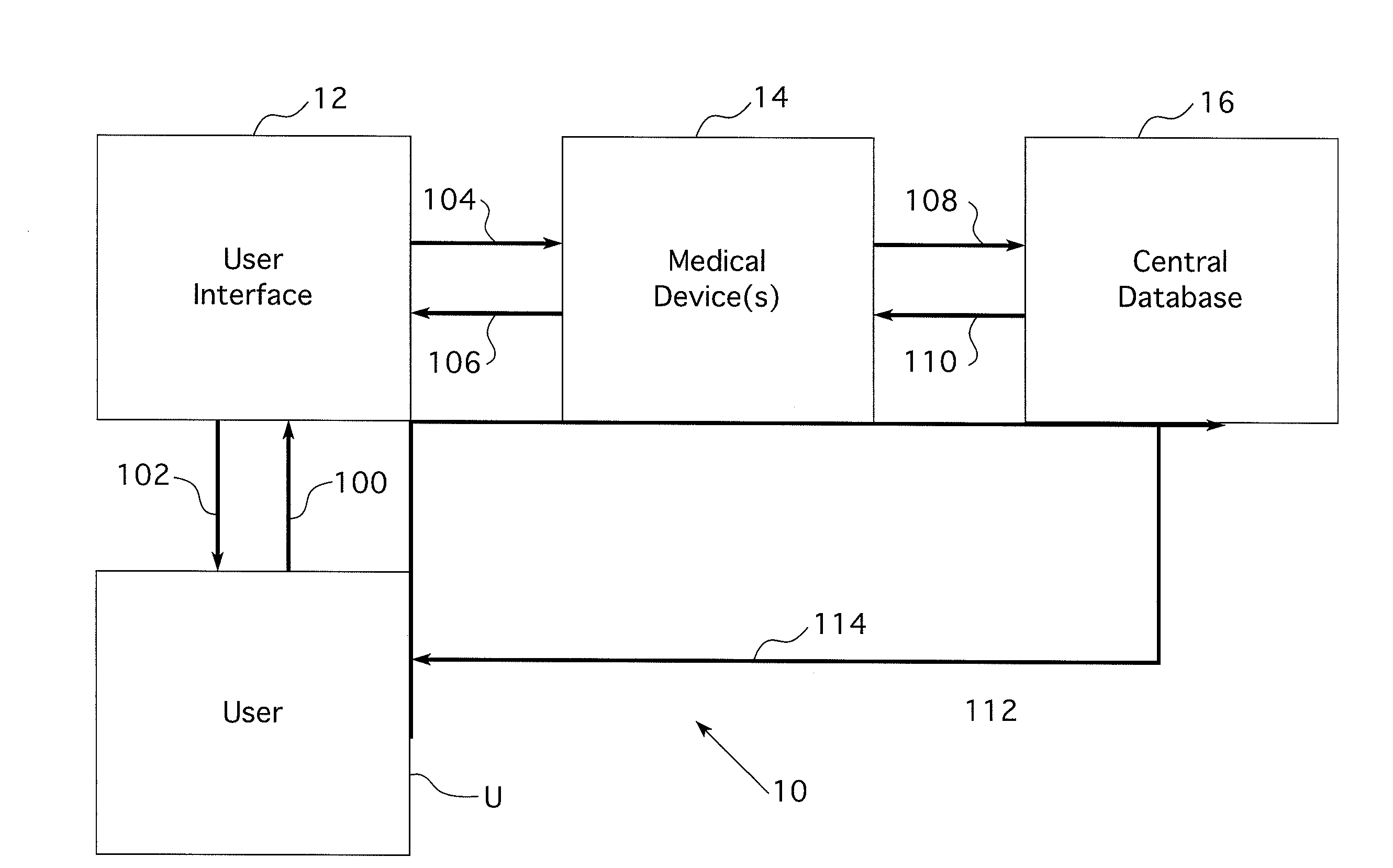System and method for automated benchmarking for the recognition of best medical practices and products and for establishing standards for medical procedures
a technology of best medical practices and benchmarking, applied in the field of system and method for automated benchmarking for the recognition of best medical practices and products and for establishing standards for medical procedures, can solve the problems of slow adoption of new medical techniques, technologies and standards, even those that may be more cost-effective and beneficial than tried and tested techniques, technologies, and standards, and achieves improved quality of products or services, greatly enhanced collection of useful information, and reduced costs
- Summary
- Abstract
- Description
- Claims
- Application Information
AI Technical Summary
Benefits of technology
Problems solved by technology
Method used
Image
Examples
second embodiment
[0089]For example, FIG. 2 illustrates the present invention, system 20. Here, system 20 does not combine user interface 12, medical device 14, and central database 16 in series. Instead, in system 20, user interface 12, medical device 14 and central database 16 are connected in a circular arrangement so that they communicate with one another in a slightly different manner. In system 20, user interface 12 is connected by communication links 104, 106 to medical device 14 and via communication links 118, 116 to central database 16.
[0090]As illustrated in FIG. 2, user U may communicate directly with user interface 12 or central database 16 through appropriate communication links 100, 102, 112, 114. While these two communication paths are illustrated, it should be noted that user U may also communicate directly with medical device 14. To simplify the figures, this particular communication path is omitted from the FIG. 2 of the present invention.
[0091]Connected in the manner shown in FIG....
first embodiment
[0092]FIG. 3 illustrates system 30, which is a first variation of the first embodiment shown in FIG. 1. Here, a raw data source 22 is in communication with user interface 12 via one or both of communication links 120, 122. Raw data source 22 preferably is a database that stores information about a particular patient or procedure, among other types of information. In one aspect, raw data source 22 may be a hospital information system (HIS) in which patient-specific information and the patient's medical history are stored. The user interface 12 can request and receive information from the raw data source 22. Or, user U could interact with the raw data source 22 (via communication links 124, 126) and request that data be sent to the user interface 12 or directly to user U.
[0093]In one embodiment, it is intended that raw data source 22 be connected to user interface 12 so that user interface 12 may access the information in raw data source 22 and provide that data to medical device 14 a...
seventh embodiment
[0098]FIG. 7 illustrates a seventh embodiment, system 70, of the present invention. System 70 is a third variation of system 20 shown in FIG. 2. In system 70, more than one user interface 12, 12′ and more than one medical device 14, 14′ are shown connected to central database 16 via communication links 108, 110 and 136, 138, respectively. As discussed above, the present invention contemplates that many medical devices 14, 14′ and associated input or user interface devices 12, 12′ will be connected to the same central database 16 so that practitioners from around the world may share data with one another. In all other respects, system 70 operates like the previously described systems. Medical device(s) #114 and medical device(s) #214′ may be different, similar, or identical devices with great or minimal physical distance between them.
PUM
 Login to View More
Login to View More Abstract
Description
Claims
Application Information
 Login to View More
Login to View More - R&D
- Intellectual Property
- Life Sciences
- Materials
- Tech Scout
- Unparalleled Data Quality
- Higher Quality Content
- 60% Fewer Hallucinations
Browse by: Latest US Patents, China's latest patents, Technical Efficacy Thesaurus, Application Domain, Technology Topic, Popular Technical Reports.
© 2025 PatSnap. All rights reserved.Legal|Privacy policy|Modern Slavery Act Transparency Statement|Sitemap|About US| Contact US: help@patsnap.com



